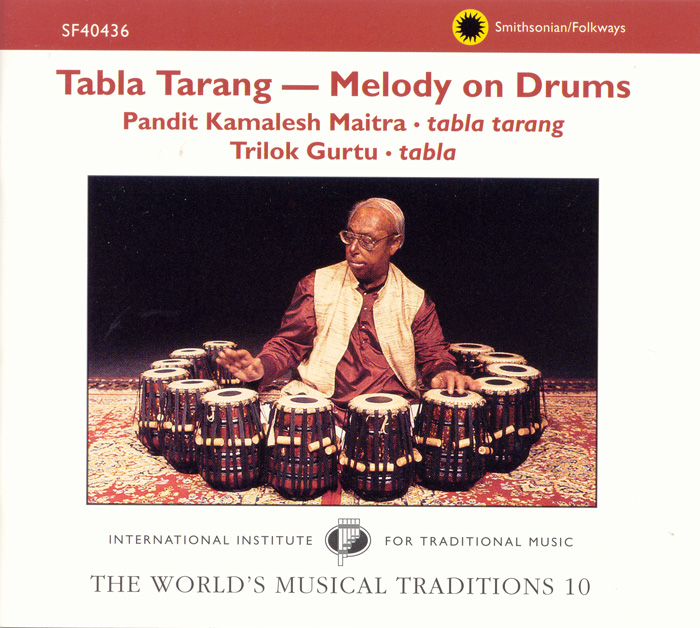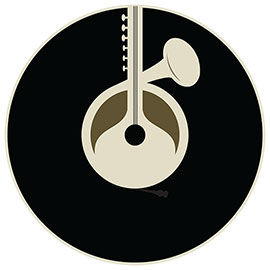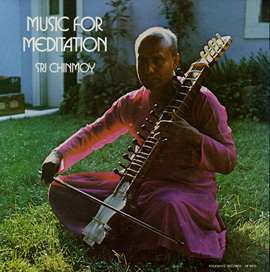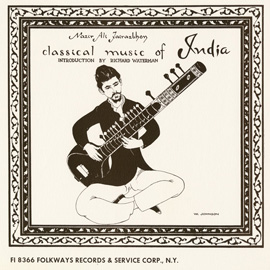Summary
Introduce students to the melodic rhythms of the tabla tarang, classical drumming from India, through music and movement. Learn to improvise the jati system of vocalizing rhythms.
Suggested Grade Levels: 6-8
Country: India
Region: Asia
Culture Group: Indian
Genre: World
Instruments: Voice, Membranophones
Language: Hindi
Co-Curricular Areas: Social Studies
National Standards: 3, 6, 9
Prerequisites: None
Objectives:
- Listening (to tabla tarang)
- Improvising using jatis (vocally and instrumentally)
Material:
- “Raag Deen Todi” by Kamalesh Maitra from The World's Musical Traditions, Vol. 10: Tabla Tarang--Melody on Drums (SFW 40436)
- Album cover of The World's Musical Traditions, Vol. 10: Tabla Tarang--Melody on Drums (SFW 40436)
- Music in North India by George E. Ruckert
- World Map
- Map of India
Lesson Segments:
- Listening (National Standards 6, 9)
- Vocalizing Rhythms (National Standards 9)
- Improvising Using Jatis (National Standards 3, 9)
- Performing Non-Pitched Percussion for “Gadzo” (National Standards 2, 9)
Lesson Segment #1: Listening

“Raag Deen Todi”
from The World's Musical Traditions, Vol. 10: Tabla Tarang--Melody on Drums (1996) | SFW40436
Procedure:
- See map of world and find India.
- Play recording of “Raag Deen Todi”.
- Face a partner and mirror their movements while listening to the recording.
- Listen again and make movements follow the melody of the drums.
- Ask students to try to identify the instrument playing the melody.
- Describe the tabla tarang and look at the photograph of Pandit Kamalsh Maitra sitting in the circle of 13 tuned tabla.
Assessment:
- Can the students feel the pulse while they are improvising movement? Can the students answer questions about the instrument?
Lesson Segment #2. Vocalizing Rhythms
Procedure:
- Practice reciting jatis (The jati system of vocalizing rhythms is utilized by musicians from both north and south India.- See pg. 8 of Ruckert book).
Assessment:
- Can the students easily vocalize the rhythms from north and south India?
Lesson Segment #3. Improvising Using Jatis
Procedure:
- Practice both chhand (one syllable per beat) and laya (syllables subdivide the beat).
- Decide on chhand or laya for the rhythmic improvisation.
- Chhand Improv:
- The class keeps a steady pulse on body percussion or quiet drums.
- Improviser uses four groups of each speech pattern, but chooses different orders during performance (the performer claps or plays a drum at the beginning of each grouping, and this is what we must be able to hear over the accompaniment during the improvisation!).
- Example (The performer plays four sets of 4, four sets of 2, four sets of 3, then ends with four sets of 1).

- Laya Improv:
- The class keeps a slow and steady pulse on body percussion or quiet drums (they should be able to fit 9 subdivisions into each pulse).
- Improviser chooses various orders of subdivisions of beats to say and play on his/her drum while performing (begin with only two or three choices rather than using all nine).
- Example (the performer chooses 2, 2, 8, 1).

Assessment:
- Can the Improviser complete both Chhand and Laya Improv? Can the rest of the class support him or her?







